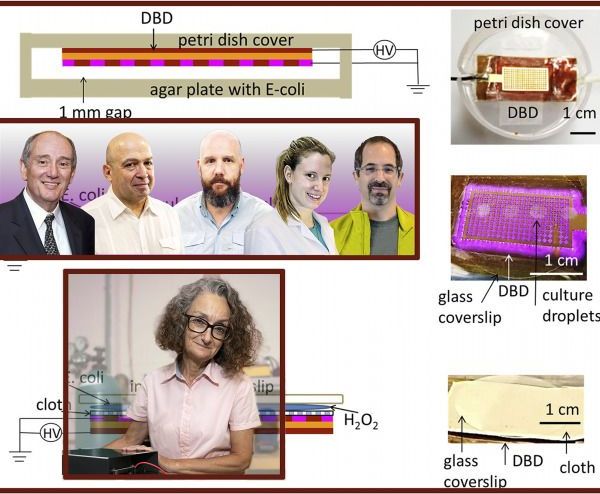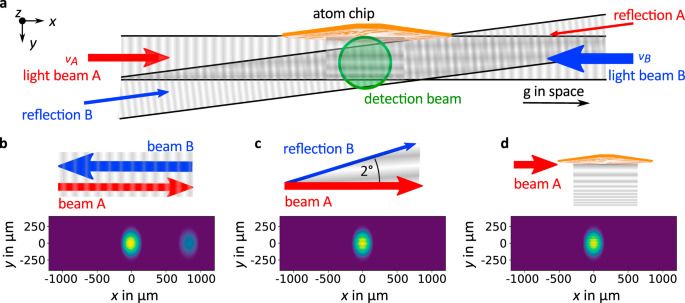Prototype has proven 99% effective.
😃 From robotic people, dogs, it seems scientists are now pushing forward with robotic vines. 😃
This robot has applications to archaeology, space exploration, and search and rescue — with a simple elegant design inspired by a plant. Sign up to Morning Brew for free today: https://ve42.co/mb.
Make your own Vine Robot! — https://www.vinerobots.org.
Special thanks to A/Prof. Elliot Hawkes, Nicholas Naclerio, Margaret Coad, David Haggerty for appearing in this video and showing off your amazing robots. For more info on vine (and other types of) robots check out https://ve42.co/HawkesLab, and https://ve42.co/CHARM
NASA hopes to score a 21st-century Wright Brothers moment on Monday as it attempts to send a miniature helicopter buzzing over the surface of Mars in what would be the first powered, controlled flight of an aircraft on another planet.
Landmark achievements in science and technology can seem humble by conventional measurements. The Wright Brothers’ first controlled flight in the world of a motor-driven airplane, near Kitty Hawk, North Carolina, in 1903 covered just 120 feet (37 meters) in 12 seconds.
A modest debut is likewise in store for NASA’s twin-rotor, solar-powered helicopter Ingenuity.
Massive solar storms in space can be picked up by iOS and Android smartphones, meaning billions of people have a personal geomagnetic storm detector — but the signals threaten to interfere with future location-based applications.
Hoping to get the public more involved in science, study author Sten F. Odenwald, an astronomer at the NASA Goddard Spaceflight Center, published a paper on the topic April 2 in Space Weather. It indicates that even through the unavoidable interference caused by other smartphone components, the phone’s built-in magnetometers can detect geomagnetic storms.
“Smartphones — at least theoretically — should be able to detect some of the strongest storms, pretty easily in fact,” Odenwald told The Academic Times. “Especially if you happen to live up in the northern latitudes — in Minnesota or in Canada, or places like that where it really rocks and rolls.”
This article is part of a series tracking the effects of the COVID-19 pandemic on major businesses and sectors. For other articles and earlier versions, go here.
A global shortage of semiconductors — chips that power massive data-centers, modern autos and countless digital devices — has roiled global manufacturing and is not expected to end soon. It isn’t a blanket problem, however, as different sectors within the chip industry will continue to be affected by the shortage in different ways.
As the industry entered 2020, high demand was expected in the mobile chip area because of the rollout of 5G devices. That path was turned on its head when COVID-19 became a global pandemic, driving millions, if not billions, of people into the safety of their homes to work, go to school, be entertained and to socialize.
Oxygen diatomic molecules have lone-pair electrons and magnetic moments. A high-pressure phase called epsilon oxygen is considered stable in a wide pressure range. This material exhibits the transition to metal at ∼100 GPa (1000, 000× atmospheric pressure). The change in the electronic structure involved in the transition under pressure is difficult to measure using conventional methods. In this study, the electronic structures of oxygen have been successfully measured with oxygen K-edge X-ray Raman scattering spectroscopy. We found a change in the spectra related to the metallization of oxygen. Another change in the electronic structure was also observed at ∼40 GPa. This is likely related to the semimetallic transition.
Electronic structures of dense solid oxygen have been investigated up to 140 GPa with oxygen K-edge X-ray Raman scattering spectroscopy with the help of ab initio calculations based on density functional theory with semilocal metageneralized gradient approximation and nonlocal van der Waals density functionals. The present study demonstrates that the transition energies (Pi*, Sigma*, and the continuum) increase with compression, and the slopes of the pressure dependences then change at 94 GPa. The change in the slopes indicates that the electronic structure changes at the metallic transition. The change in the Pi* and Sigma* bands implies metallic characteristics of dense solid oxygen not only in the crystal a–b plane but also parallel to the c axis. The pressure evolution of the spectra also changes at ∼40 GPa.
This year-old zdnet article notes that the company plans a photo-sensitivi ty range from ultraviolet through visible light to 2000nm infrared. The sensor itself retains almost 4x the light of ordinary CMOS sensors, while being 2000x more sensitive to light. This will put it on par with the best analogue image intensification tubes used for night vision. Up until now, there have not been any digital night vision systems that can match analogue systems. This will be better, with higher resolution and multichromatic. It also has a 100x greater dynamic range than ordinary CMOS sensors, according to the specifications from SeeDevice’s site linked below. (This means that it can image both bright and dark areas clearly and simultaneously, instead of having the bright areas washing out the image, or the dark areas being black. The included photo is from its website, demonstrating a wide dynamic range photo produced by the system. On a normal photo, either the sky would appear black, or the road would be so bright that it would look washed out.)
Hopefully coming soon to a cell phone camera near you…
SeeDevice’s site: https://www.seedeviceinc.com/technology







